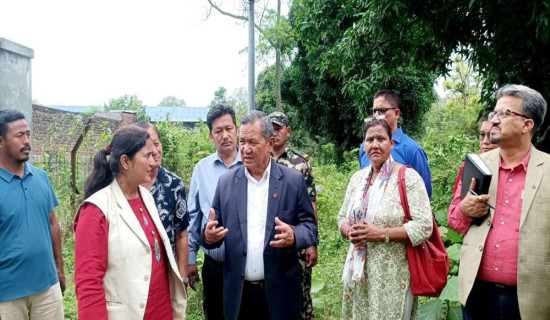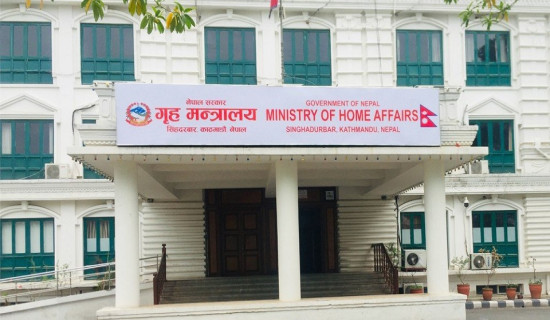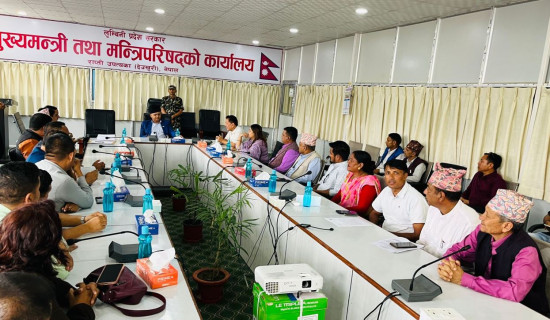- Friday, 6 June 2025
Health Reform: Leave No One Behind
Globally, the epidemiological and demographic transitions are underway. The health sector reform process is further influenced by rapid political and socio-economic changes. There are mounting challenges of addressing growing communicable and non-communicable diseases causing high morbidity, mortality and disability. While more investments in health systems strengthening are inevitable, effective community engagement is also crucial to ensure no one is left behind from accessing basic health care.
People are left behind when they experience exclusion or bias in laws, policies, access to public services and social practices due to their identity, gender, age, income, ethnicity, caste, religion, disability, sexual orientation, or nationality. Discrimination towards populations based on one or more such identities may cause a person to be left behind due to stigma, shame, discriminatory actions or other human rights violations.
Sustainable health system
The Constitution of Nepal aims to embrace the aspirations for sustainable peace, good governance, development and prosperity through a federal democratic system of governance. The adoption of inclusive and participatory approaches in the development process is a distinct feature for ensuring equity and social justice. The transformative strategies in the 16th Plan (2024/25-2028/29) have placed great emphasis on harnessing a multi-sectoral approach in building resilient and sustainable health systems.
Health sector reform is largely a political process governed by health policies, strategic priorities and institutional arrangements to generate public trust and confidence that people’s aspirations for health for all are truly enlarged and empowered for their overall social well-being. While health is a fundamental human right, health sector reform is a high priority agenda in the larger socio-cultural, political and economic contexts of Sustainable Development Goals (SDGs), national development plans, health policies and programmes.
More importantly, the government institutions are responsible for the financing, regulation, purchasing and provision of health care. The reform processes are highly diverse and complex. The gender and social inclusion approach to expanding coverage has yielded minimal progress. The low involvement of civil society and private sectors is another deepening concern for ensuring equitable and efficient health care. There are inadequate efforts to review how local governments can and should allocate public resources for health, what should be the level of public and private expenditure, and how private resources can be mobilised for public health expenditure.
In Nepal, despite significant efforts of the government and development partners, health sector reform has not yet seen sustained progress. The performance of the health sector needs to be improved as there are still institutional bottlenecks in the governance, sustainable financing, provision of effective implementation of basic health care services, and universal health coverage. One worrying scenario is that people’s hope for equity, efficiency, quality, financing and sustainability in the provision of health care is still elusive. Nepal’s culture of reforming institutions for effective policy implementation and service delivery needs to be transformed from the conventional mindsets and dominant views of technocrats towards innovations and solutions.
For the next few decades, the widening health inequities will be major barriers to ensuring access to basic health care for all. This means that attaining the universal goal of health for all will be a distant dream and the issues of equity, solidarity and social justice in health cannot be realistically addressed. Historically, there are crucial challenges of ensuring quality health care at all health facilities. Because regulatory, monitoring and quality control mechanisms have been weak for decades.
Strengthening local governance for health is a matter of priority for the federal government. However, limited efforts are not making tangible progress in this regard. Social contracting services, social health insurance, social security and cost-sharing schemes, and other community-led financing mechanisms to protect poor families suffer from delays in implementation. In addition, hospital management is a relatively neglected area in many rural hospitals. There is little focus on increasing the efficiency of the hospitals in providing quality health care.
The government’s high priority for health insurance is not gaining progress as there are so many practical issues for effective implementation. There is growing criticism that popular health schemes are only political slogans, and they are hardly translated into actions. Moreover, scare resources are inefficiently used. The majority of the health projects aimed at strengthening health sector reform are supported by external development partners. Such support eventually lacks continuity and sustainability as funding from the partners will decrease or come to an end soon.
Poverty
Poverty, difficult geography, limited transport facilities, poor health infrastructure, and unavailability of comprehensive health care in the health facilities are hindering people’s access to quality health care in rural areas. On the other side, investments in other sectors such as education, agriculture, transport, urban development, environment, water and sanitation are limited in rural areas. To sum up, the meanings we associate with health sector reform are wonderfully various. As a way forward, capacity building of the governments is one of the significant priorities for institutional development in the health sector at all levels. The challenges remain in the context of strengthening the national capacity for managing the health sector within the framework using sector-wide approaches in health policy and programme development.
Given the complexities of federal health governance, more focus is needed to enhance the institutional capacity of local governments and socially excluded communities for inclusive health policies. There is no specific blueprint for health sector reform in the country. However, institutional reform is particularly needed to achieve the policy objectives of improved efficiency, equity, more responsive services and better health outcomes.
(Bhandari is a health policy analyst and has an interest in anthropology.)





-square-thumb.jpg)


-square-thumb.jpg)








